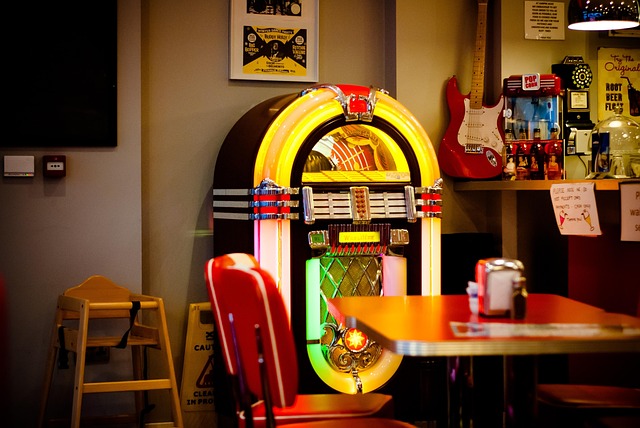Jukeboxes, those vibrant machines that filled pubs, cafés, and arcades with music, are more than nostalgic relics. They represent a fusion of technology, culture, and entertainment that shaped social spaces for nearly a century. This in-depth article explores the origins, evolution, and enduring appeal of jukeboxes, delving into why they were created, their peak popularity, and their relevance today.
Origins of the Jukebox: The Dawn of Automated Music
The jukebox’s story begins in the late 19th century, a period of rapid technological advancement. While music boxes and player pianos existed, the concept of a coin-operated machine allowing song selection was groundbreaking.
- The Pre-Jukebox Era: In the 1870s and 1880s, coin-operated phonographs and music boxes appeared in public venues like pubs and amusement halls. These played a single tune or pre-set selection, offering no user choice. They were novelties, often hand-cranked, and limited by fragile wax cylinder technology.
- The First Jukebox (1889): The earliest jukebox precursor was created by Louis Glass and William S. Arnold in San Francisco. On 23 November 1889, they installed a coin-operated Edison phonograph with four listening tubes at the Palais Royale Saloon. For a penny (roughly £0.05 in modern terms, adjusted for inflation), patrons could hear a song through a tube. Though lacking song selection, this “nickel-in-the-slot” machine laid the foundation for user-driven music playback.
The term “jukebox” emerged in the 1930s, likely from “juke joints,” African-American slang for lively bars in the southern U.S. The word “juke” may derive from the Gullah “joog,” meaning disorderly or spirited, reflecting the vibrant atmosphere of these venues.
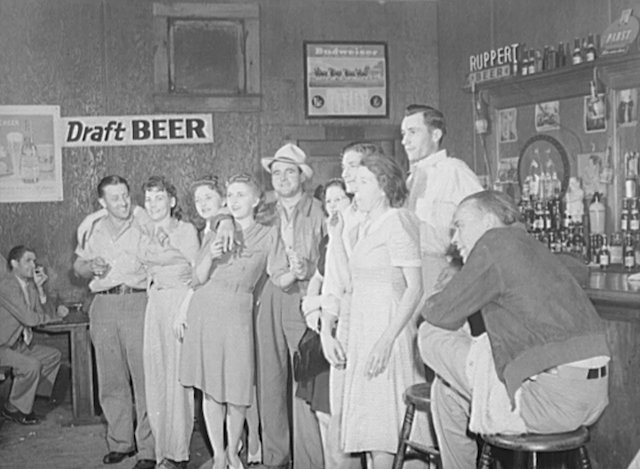
Why Jukeboxes Were Produced: Technology Meets Demand
Jukeboxes arose from a blend of technological innovation, social change, and economic opportunity. Here’s why they were created and thrived:
- Technological Advancements:
- Phonograph Improvements: By the early 20th century, Emile Berliner’s flat disc records replaced wax cylinders, making music playback reliable and scalable. Discs were easier to produce and store, enabling machines to hold multiple records.
- Amplification: Electric amplification in the 1920s eliminated listening tubes, allowing jukeboxes to fill rooms with sound. Companies like Western Electric provided the necessary audio technology.
- Mechanization: Innovations in record-changing mechanisms, pioneered by firms like the Automatic Musical Instrument Company (AMI), enabled jukeboxes to store and play multiple records, offering song choice.
- Social and Cultural Shifts:
- Urbanisation and Leisure: As UK cities grew in the early 20th century, pubs, cafés, and dance halls became social hubs. Jukeboxes provided affordable, on-demand music, replacing costly live bands.
- The Great Depression: In the 1930s, jukeboxes offered escapism during economic hardship. For a penny or two (about £0.10–£0.20 today), patrons could enjoy a song, making jukeboxes a budget-friendly entertainment option.
- Post-War Culture: After World War II, Britain’s rebuilding efforts and growing youth culture fueled demand for music in social spaces, with jukeboxes becoming fixtures in milk bars and coffee shops.
- Economic Incentives:
- Profitability: Jukeboxes were lucrative for operators, venue owners, and manufacturers. Operators placed machines in pubs or cafés, splitting profits with the venue. This model drove widespread adoption.
- Music Industry Synergy: Jukeboxes boosted record sales by exposing audiences to new artists. Record labels collaborated with operators to promote releases, creating a mutually beneficial ecosystem.
The Golden Age of Jukeboxes: 1930s–1950s
The jukebox reached its peak during the mid-20th century, becoming a cultural icon in the UK and beyond. This “Golden Age” saw jukeboxes evolve from functional devices to dazzling design pieces.
- Key Manufacturers: Four companies led the market: Wurlitzer, Seeburg, AMI, and Rock-Ola, with their machines imported to the UK or licensed for local production.
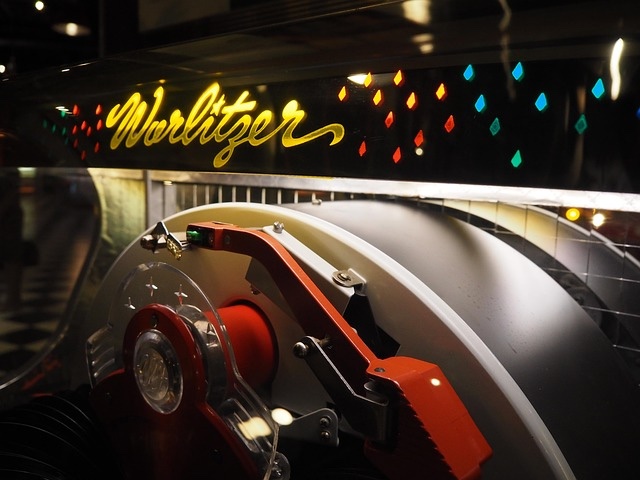
- Wurlitzer: Known for bubble tubes and vibrant designs, Wurlitzer’s Model 1015 (1946) epitomised post-war optimism and was popular in British venues.
- Seeburg: A pioneer, Seeburg’s Select-O-Matic (1949) offered 100 selections (50 records, both sides), revolutionising choice.
- Rock-Ola: Named after founder David Rockola, the company produced sleek, high-quality machines that found a market in the UK.
- AMI: Known for compact designs, AMI’s “Singing Towers” were common in smaller British pubs.
- Design and Aesthetics: Jukeboxes became visual spectacles, with chrome, neon lights, and Art Deco or Streamline Moderne styling. They defined the ambiance of venues, from London’s Soho coffee bars to seaside arcades.
- Cultural Impact:
- Rock ‘n’ Roll Revolution: Jukeboxes helped spread rock ‘n’ roll in the 1950s, introducing British youth to Elvis Presley, Chuck Berry, and homegrown acts like Cliff Richard. Teenagers flocked to cafés, feeding coins (typically 6d, about £0.15 today) to hear the latest hits.
- Social Spaces: Jukeboxes turned pubs and milk bars into communal hubs for dancing and socialising, central to the UK’s emerging youth culture. They featured in films like Expresso Bongo (1959), capturing the era’s energy.
- Post-War Boom: After World War II, jukeboxes boosted morale in social clubs and pubs. By the late 1940s, thousands of machines dotted the UK, with operators earning steady profits from coin revenue.
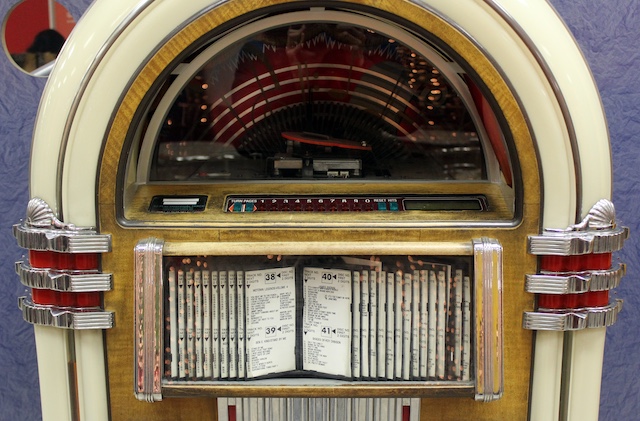
Decline of the Jukebox: 1960s–1980s
By the 1960s, jukeboxes faced challenges as new technologies and cultural shifts emerged.
- Competition from Other Media: Portable radios, home stereos, and television offered alternative music access. By the 1970s, cassette tapes and hi-fi systems further diminished jukebox appeal.
- Changing Venues: As chain restaurants and modern pubs replaced traditional cafés and dance halls, jukeboxes lost their prominence. Many venues opted for piped background music.
- Technological Limitations: Jukeboxes, designed for 45 RPM singles, struggled with the rise of albums in the 1960s and 1970s. Adapting to new formats like cassettes was costly.
- Economic Challenges: Rising maintenance costs and declining coin revenue (even with prices rising to 10p, about £0.80 today) made jukeboxes less viable. Many were removed or replaced.
Despite the decline, jukeboxes persisted in retro venues, and manufacturers introduced models with cassette tapes and, later, CDs.
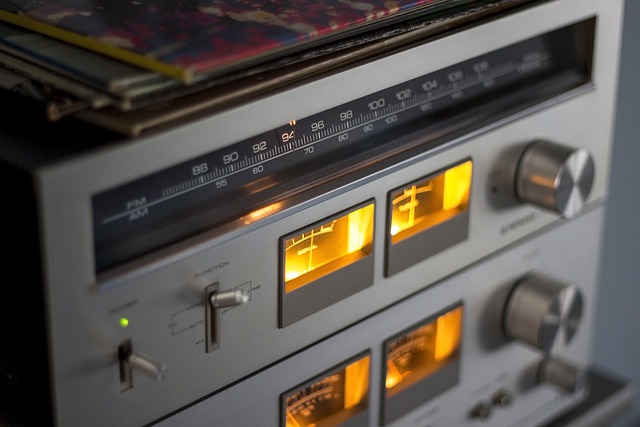
The Modern Jukebox: Nostalgia Meets Innovation
Today, jukeboxes blend vintage charm with modern technology, maintaining a presence in the UK’s pubs, clubs, and collector circles.
- Digital Jukeboxes:
- Companies like TouchTunes and AMI Entertainment produce internet-connected jukeboxes with touchscreens, mobile app integration, and vast digital libraries. These machines, found in UK pubs and entertainment venues, charge £1–£2 per song, reflecting inflation from the old 6d days.
- TouchTunes operates thousands of jukeboxes across the UK and Europe, proving the model’s commercial viability.
- Nostalgia and Collectibility:
- Vintage jukeboxes, particularly Wurlitzer and Seeburg models, are prized by UK collectors. A restored Wurlitzer 1015 can sell for £8,000–£15,000, reflecting their status as design icons.
- Retro-themed pubs and cafés, especially in cities like London and Manchester, feature classic jukeboxes for ambiance, even if non-functional.
- Cultural Presence:
- Jukeboxes remain cultural touchstones, appearing in British media like Call the Midwife or music venues celebrating 1950s aesthetics. They evoke nostalgia for post-war Britain and the rock ‘n’ roll era.
- UK-based jukebox enthusiast groups, such as the British Jukebox Society, host events and auctions, fostering a community of restorers and collectors. Recent X posts highlight restored machines in pubs, with one user describing a 1950s Wurlitzer in a Brighton bar sparking lively song debates.
- Popularity Today:
- Digital jukeboxes thrive in UK pubs and leisure venues, offering interactive entertainment. However, their cultural impact is less profound than in the Golden Age, as streaming apps dominate personal music consumption.
- Web searches show a robust market for vintage and modern jukeboxes, with UK retailers like Jukebox Revival catering to collectors and businesses. X posts from 2025 mention digital jukeboxes in London and Glasgow pubs, noting their role in creating social atmospheres.
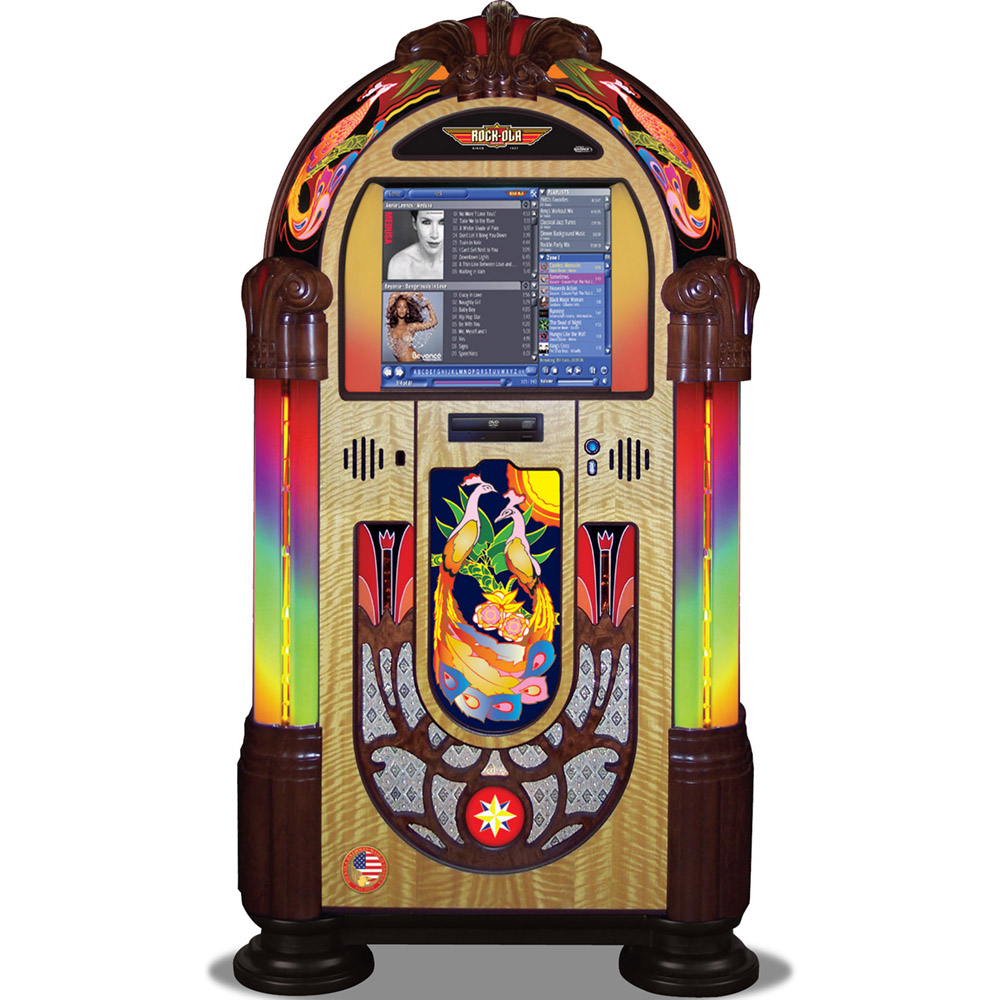
Why Jukeboxes Still Matter
Jukeboxes were created to make music accessible to all, transforming UK pubs and cafés into vibrant, music-driven spaces. They thrived during economic hardship and post-war optimism, adapting to changing tastes. Today, whether spinning vinyl in a collector’s home or streaming hits in a modern pub, jukeboxes foster connection through shared music.
- Nostalgia: Jukeboxes evoke memories of Britain’s post-war youth culture, resonating across generations.
- Interactivity: Unlike streaming apps, jukeboxes offer a communal experience, where patrons shape a venue’s soundtrack.
- Design: The glowing lights and sleek designs of classic jukeboxes remain timeless, enhancing any space.
Conclusion
From their origins as “nickel-in-the-slot” phonographs to their status as cultural icons, jukeboxes have shaped music and social life in the UK. Born from innovation, they thrived in pubs and cafés, defining an era of shared entertainment. Though their dominance waned, their modern resurgence—through digital machines and collectible classics—proves their enduring appeal. Jukeboxes remain a testament to technology’s power to unite people through music, ensuring their place in Britain’s cultural landscape.

